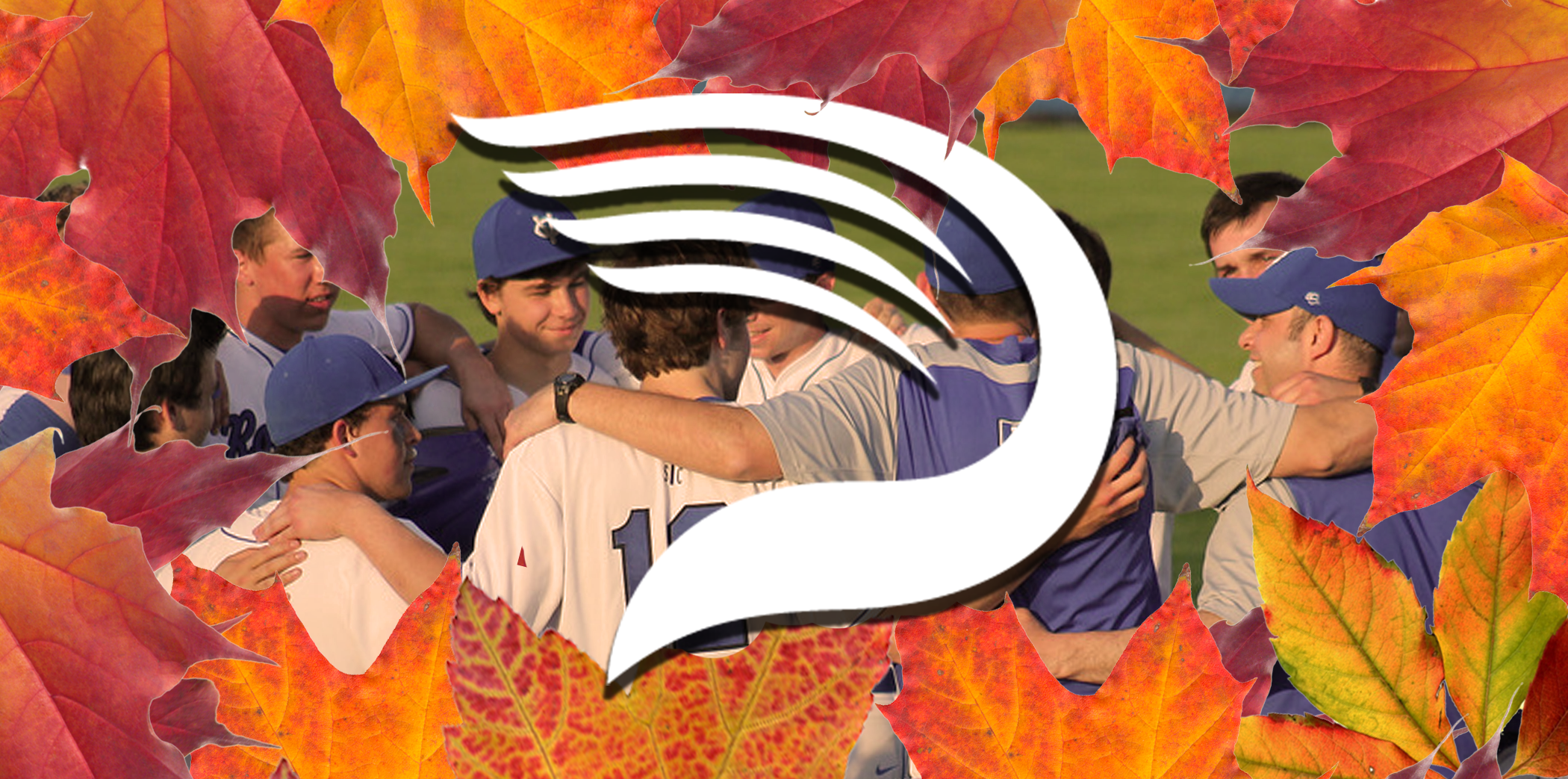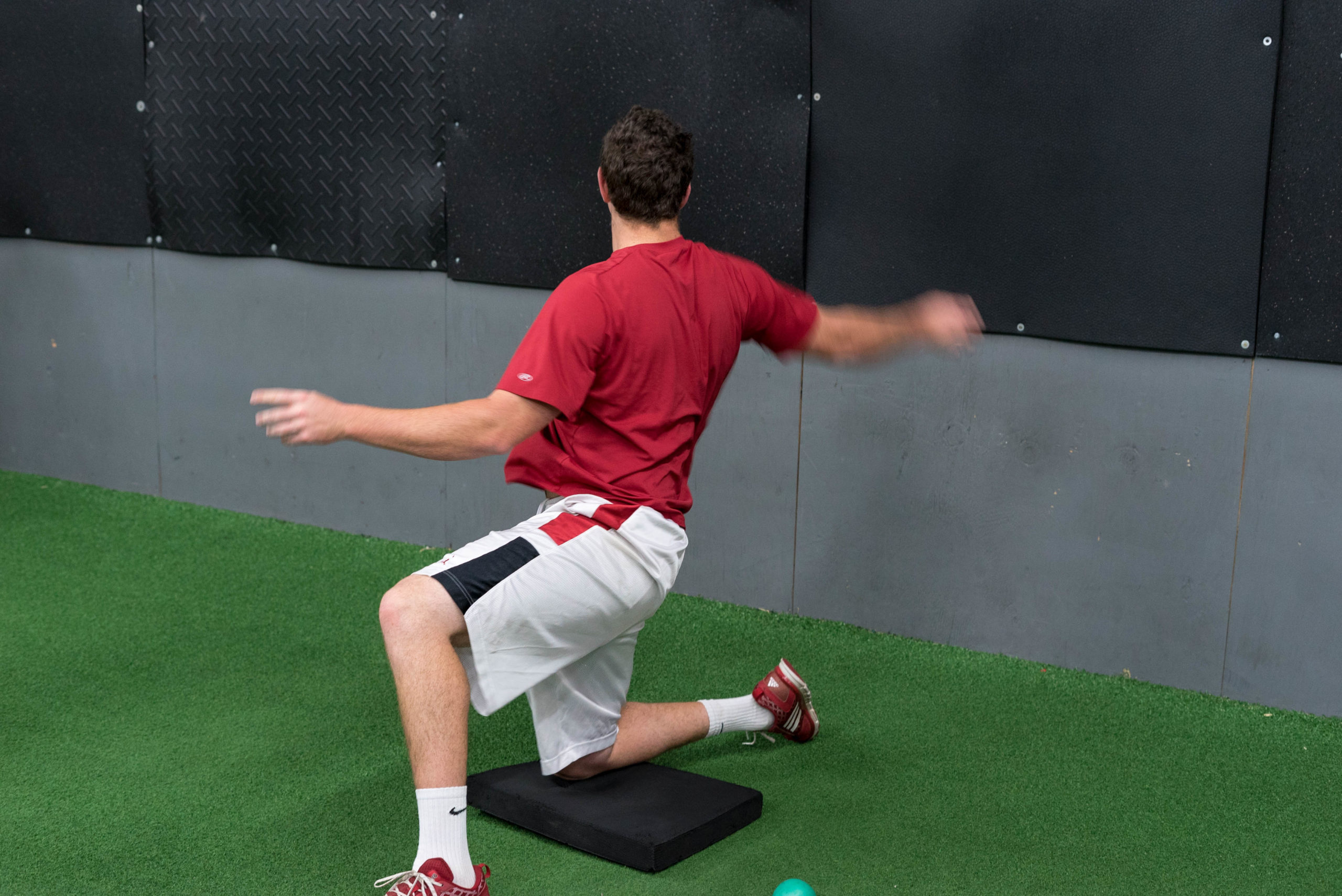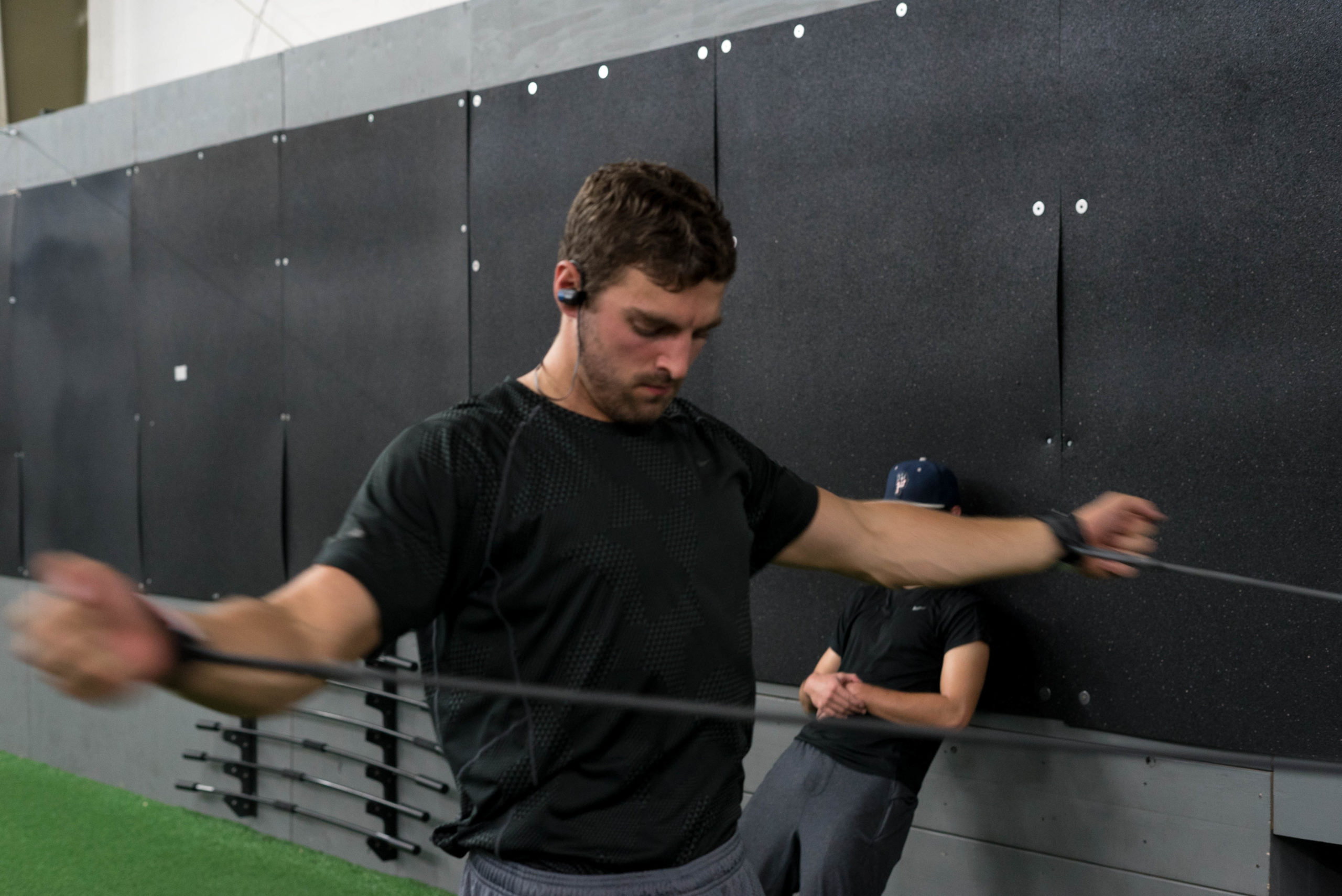Coaches Series: Driveline Fall Implementation

This article was written by former Driveline trainer and current Lake Erie Head Coach Cam Castro. Cam details on how to on-board both coaches and pitchers with Driveline’s programming and equipment at the college level (Twitter: @Castro_Turf)
In the spirit of Jason Ochart’s recent post, Implementing Driveline Hitting Into Team Practice, I thought it would be beneficial to outline the same from the throwing side of things. Simply put, how do we as coaches implement Driveline throwing protocols into our fall practices? And how do we do this while coinciding with things like intrasquad scrimmages, outside competition, evaluation and skill instruction?
On-Boarding and Entire Staff
Last fall, in my first year at Lake Erie, I inherited a staff of fifteen athletes—only two of which had any real experience with the training methods I was going to be tasking them with. This year, that staff has grown to eighteen, and we have a large group of returners who are fairly comfortable and confident in the programming. However, we also have a handful of newcomers, all of whom will require a full on-boarding. As a general rule, it’s a good idea to on-board all of your athletes every fall.
Below is a deeper look into the on-boarding our pitchers will go through this fall:
We ensure that the first two weeks of our fall season is entirely devoted to diving into the ins and outs of our program—from foam rolling to rebounders and everything in between. For some athletes this means a refresher and/or reinforcement of drill compliance and fluidity. For others, this means learning just how difficult it is to nail down wrist-weight pivot pickoffs.
It’s also worth noting that no on-boarding is complete without a detailed movement screen for physical deficiencies and a plan on how to correct them. Above all else, it helps you gather the most information possible on your athletes and make programming adjustments as necessary. I encourage you to link up with your athletic training staff and put a movement screening process together, or use this post on athlete screening by Sam Briend as a reference guide.
From On-Boarding to On-Ramping
After we’ve spent adequate time bringing the staff up to speed with the program, we start to get into the meat and potatoes of our fall season. Now, I understand that everyone’s fall schedule is dictated by what we’re allowed to do as coaches; that is, it’s subjective to which levels we coach. (For example, our practice regulations at the NCAA Division II level are different than that of Division III and junior college.) But again, I promise you, regardless of level, you can do this.

For us, we are able to practice up to five days per week. So that means on average we are on the field for team practice for three of those days and typically intrasquading or playing outside competition for the other two.
Below is an example of our first five weeks this fall:
We use those three days in the middle of the week (Hybrid and Recovery Days) to break down movement patterns in constraint drills, ensure that warm-up/throwing prep and recovery circuits are being precisely followed, and optimize throwing programs for each athlete (make individual adjustments). All of that is followed up by Gameday, or Thunder Nuggets, or Fire Emjoi’s, or whatever you want to call it, on the weekends.
Laying Out a Practice Plan
All right, now let’s get down to good part: How do I make time for all this? The short version, I make time!
Our pitchers are never shorted time in practice to complete their daily throwing load, regardless of what we’re aiming to accomplish as a team. This is key: make sure that your athletes never feel rushed to complete their work. Now I understand that as coaches we only get so much time with our athletes and we want to maximize it, but you won’t get this time back. If you cut short or belittle the importance of fluidity in Plyo Ball ® drills, you will regret it later.
To the head coaches reading this, if you’re a believer in Driveline programming, you have to be willing to let your pitchers carve out 60-90 minutes at the start of practice for them to go through a full SMR, throwing prep, throwing load, and recovery circuit. This probably means doing something like starting practice with BP and defensive work for position players so pitchers can get their work in.

To the pitching coaches reading this, find a way and figure it out. A few years back I was in your shoes; I was a pitching coach trying to do a little bit more for our guys. This meant telling all our pitchers that if team practice started at 3:30 p.m., pitchers’ practice started at 2:30 p.m. We always showed up an hour before the position guys and started to get to work on what we wanted to accomplish that day. That way, by the time we were done, so were the position players with their pre-practice routines. This meant we could come together as a team and start attacking the team practice plan.
Making It Work With Intrasquads and Scrimmages
The one constant in every coach’s fall plan is evaluation, rolling the ball out and letting the boys play, intrasquads, outside competition, fall World Series. Understand that what you’re trying to accomplish when on-ramping your athletes is to prepare them for a heavy training load and more dense velocity-based training in the winter months. This can still be done even if you’re playing every weekend in the fall.
That being said, we like to give our athletes some free reign on our gameday in the fall. Below is a list of what is mandatory for each pitcher to complete before competing in a weekend outing and another list of what is optional.
Notice there is no optional recovery work, because you must always do your recovery routine. No exceptions here!
We’ve found this system to work best. By the time we get to that first scrimmage date, we feel like each athlete has a pretty good hold on the programming as a whole, and we not only outline a few things we expect of them but also give them plenty of other “add-on” options.
The end goal with this is that each athlete has the freedom to do whatever he thinks gets him hot and able to be at his best that day. It creates ownership and also helps them learn their bodies and appreciate how vital preparation is. What you may notice here is a guy who is only doing what’s mandatory not performing well will end up doing a little bit of the “optional” work the following week. Funny how that works.
Prepare, Evaluate, and Compete
At the end of the day, there is a little trial and error in a first time fall implementation, but I stand by the fact that no matter how many practice days you have to work with, or what your hours limitation is, this can be done: where there’s a will there’s a way. To us, the fall season is a tool. And its purpose is to prepare, to evaluate, and to compete. Prepare your staff for the winter training months to come, evaluate your staff to see what you have as you build towards the spring, and compete every chance you get. Try the plan I’ve outline above and see for yourself.
We’ve published other articles that are directed towards coaching, check them out here!
Comment section
Add a Comment
You must be logged in to post a comment.
Coaches Series: Review of First Year Implementation - Driveline Baseball -
[…] COACHES SERIES: DRIVELINE FALL IMPLEMENTATION […]